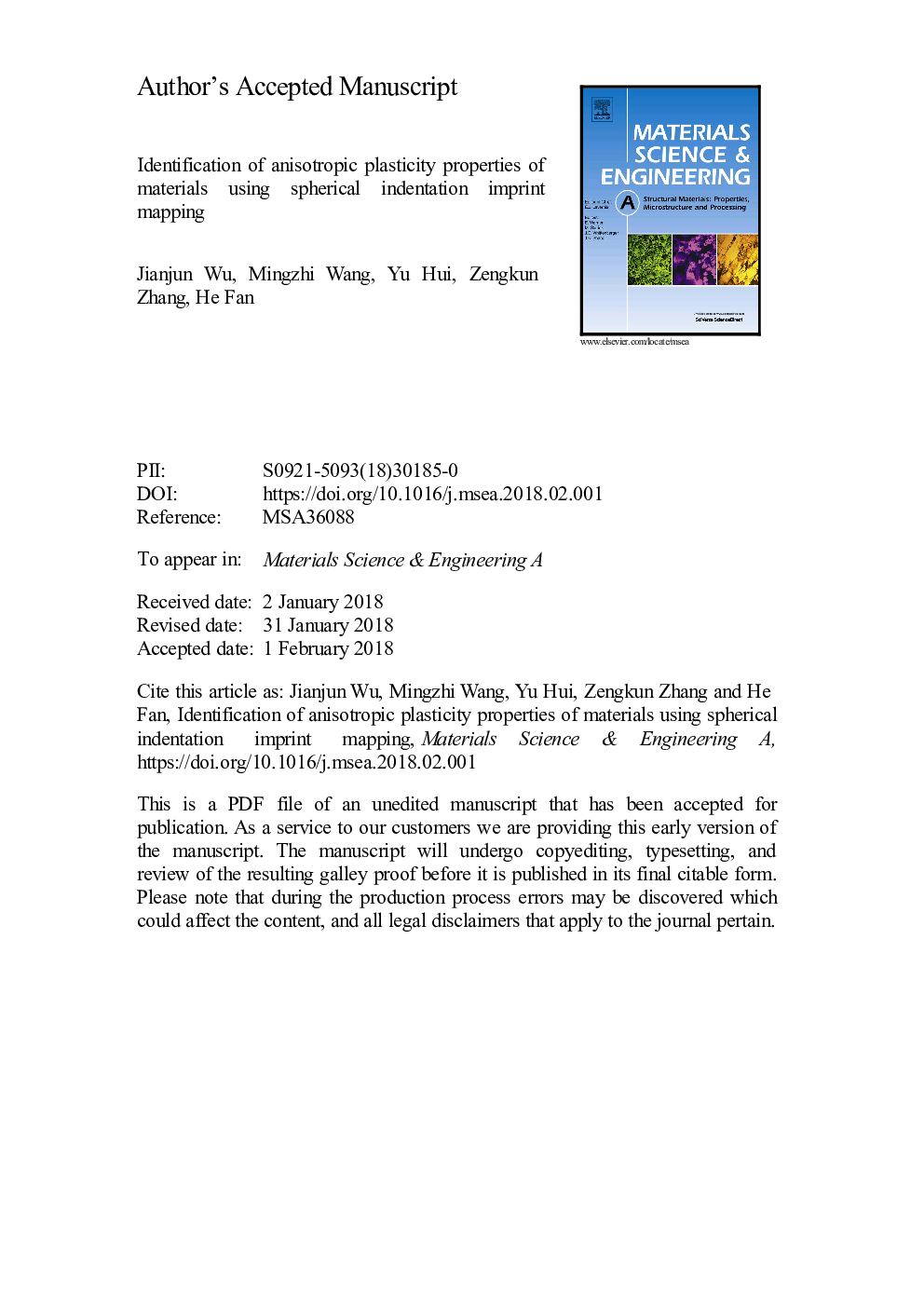| Article ID | Journal | Published Year | Pages | File Type |
|---|---|---|---|---|
| 7972694 | Materials Science and Engineering: A | 2018 | 25 Pages |
Abstract
In this paper, a new inverse method is proposed to identify the anisotropic plasticity properties of materials using solely the residual imprint mapping in spherical indentation. This method does not need the entire load-displacement (P-h) curve in spherical indentation experiment. The stress strain curves along transverse and longitudinal directions of the indented specimens can be simultaneously identified using single spherical indentation test. The new method is based on weighting the average and difference amounts, SÌ
and âS of the residual imprint snapshots along transverse and longitudinal directions. The proper orthogonal decomposition is used to correlate the effective imprint snapshots with material constitutive parameters, and the inverse problem is solved by the “Interior-point” optimization algorithm. We finally applied the new method on the SiCw/A6061. The well-posed solution of material properties is achieved, and the anisotropic plasticity parameters obtained from indentation and uniaxial tests show good agreement. Besides, the influence of weighting factor and experiment error on the numerical results are also investigated. Results indicate the proposed inverse method is very effective and reliable.
Related Topics
Physical Sciences and Engineering
Materials Science
Materials Science (General)
Authors
Jianjun Wu, Mingzhi Wang, Yu Hui, Zengkun Zhang, He Fan,
